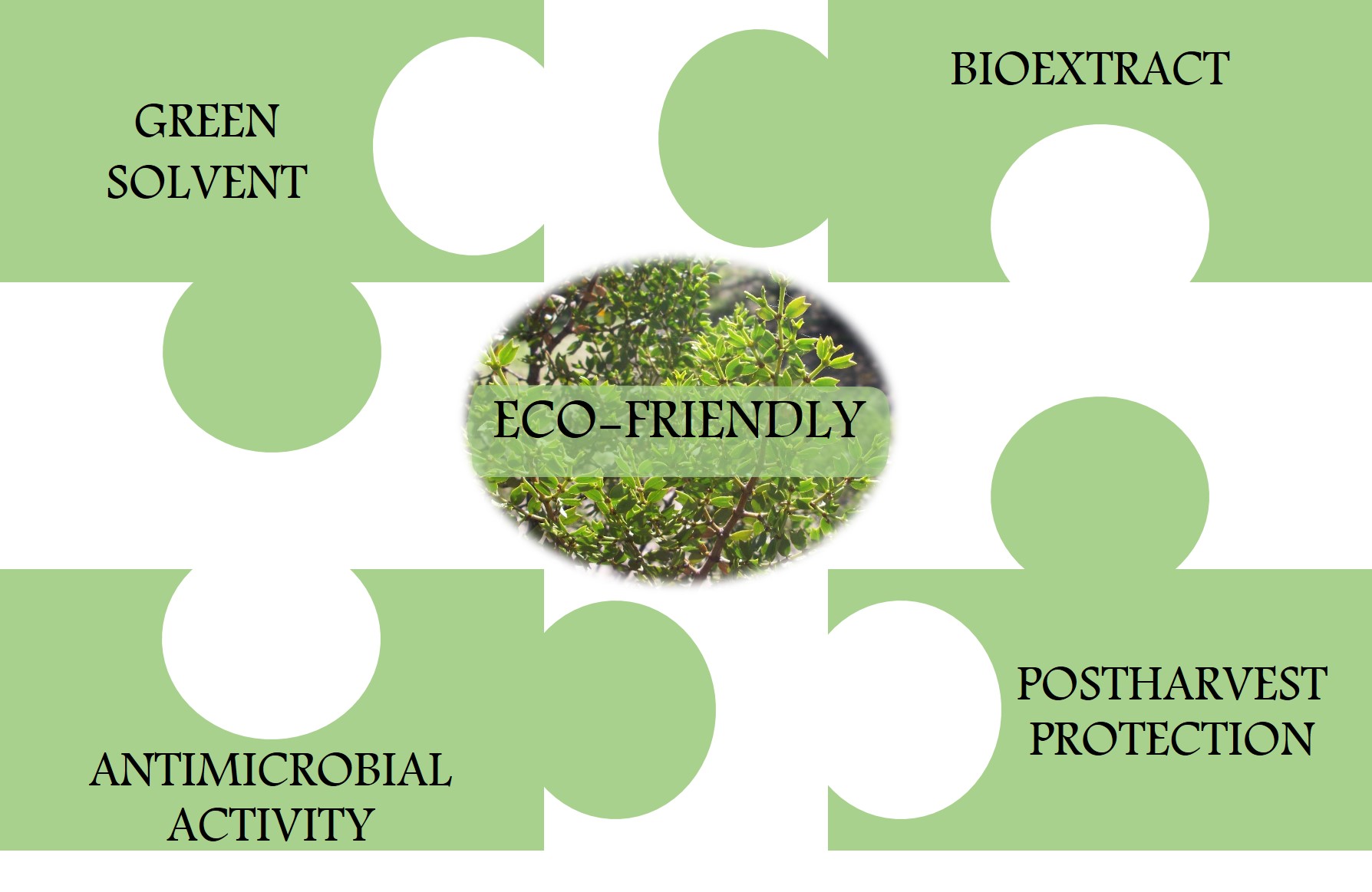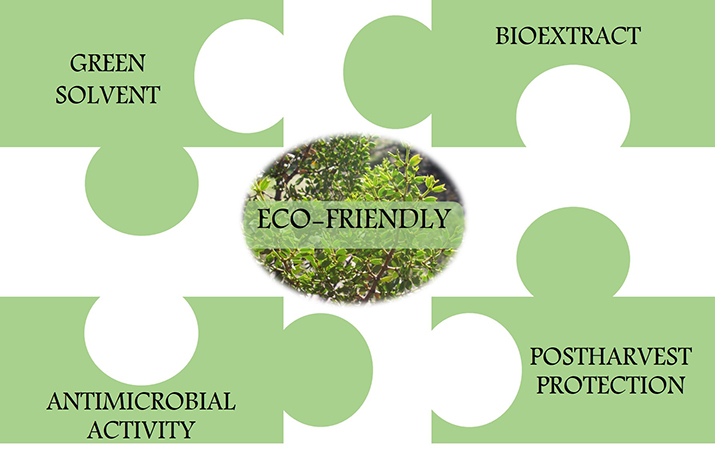ECo-friendly postharvest protection: Larrea cuneifolia-nades extract against Botrytis cinerea
Keywords:
natural deep eutectic solvents, biocompounds, antimicrobial activity, medicinal plant, postharvest controlAbstract

Botrytis cinerea is a ubiquitous fungus causing gray mold, the main postharvest disease in fruit, which implies important economic losses in agriculture. With growing concern over health and environmental effects of pesticides, the search for eco-friendly alternatives is a clear priority. Plant extracts represent a rich source of biocompounds with attractive antimicrobial properties. In the last decade, Natural Deep Eutectic Solvents (NADES) has emerged as an auspicious green extraction media to achieve bioextract for a sustainable postharvest control. In the present study, a novel L. cuneifolia NADES-based bioextract was evaluated against B. cinerea. To this purpose, a NADES composed by lactic acid, glucose and
water (LGH) was used as extracting agent and compared with traditional solvents in terms of antioxidant capacity and total phenolic content. Furthermore, the bioextract antifungal activity was tested in vitro and also in vivo on artificially inoculated grapes, in order to obtain preliminary data about the efficacy on gray mold development. The antimicrobial activity of the bioextract was assessed using agar diffusion method against B. cinerea, inhibition of 92% was achieved with the bioextract at 2%. Notably, L. cuneifolia bioextract showed an excellent performance for gray mold control on grapes, supporting their potential as alternative green fungicide.
Highlights
-
Green solvents are a promising alternative to traditional solvents for obtaining bioextracts.
-
Larrea cuneifolia bioextract was effective against Botrytis cinerea mycelial growth.
-
L. cuneifolia bioextract reveals the valuable use as sustainable fungicide.
Downloads

Downloads
Published
How to Cite
Issue
Section
License
Aquellos autores/as que tengan publicaciones con esta revista, aceptan las Políticas Editoriales.










.jpg)




